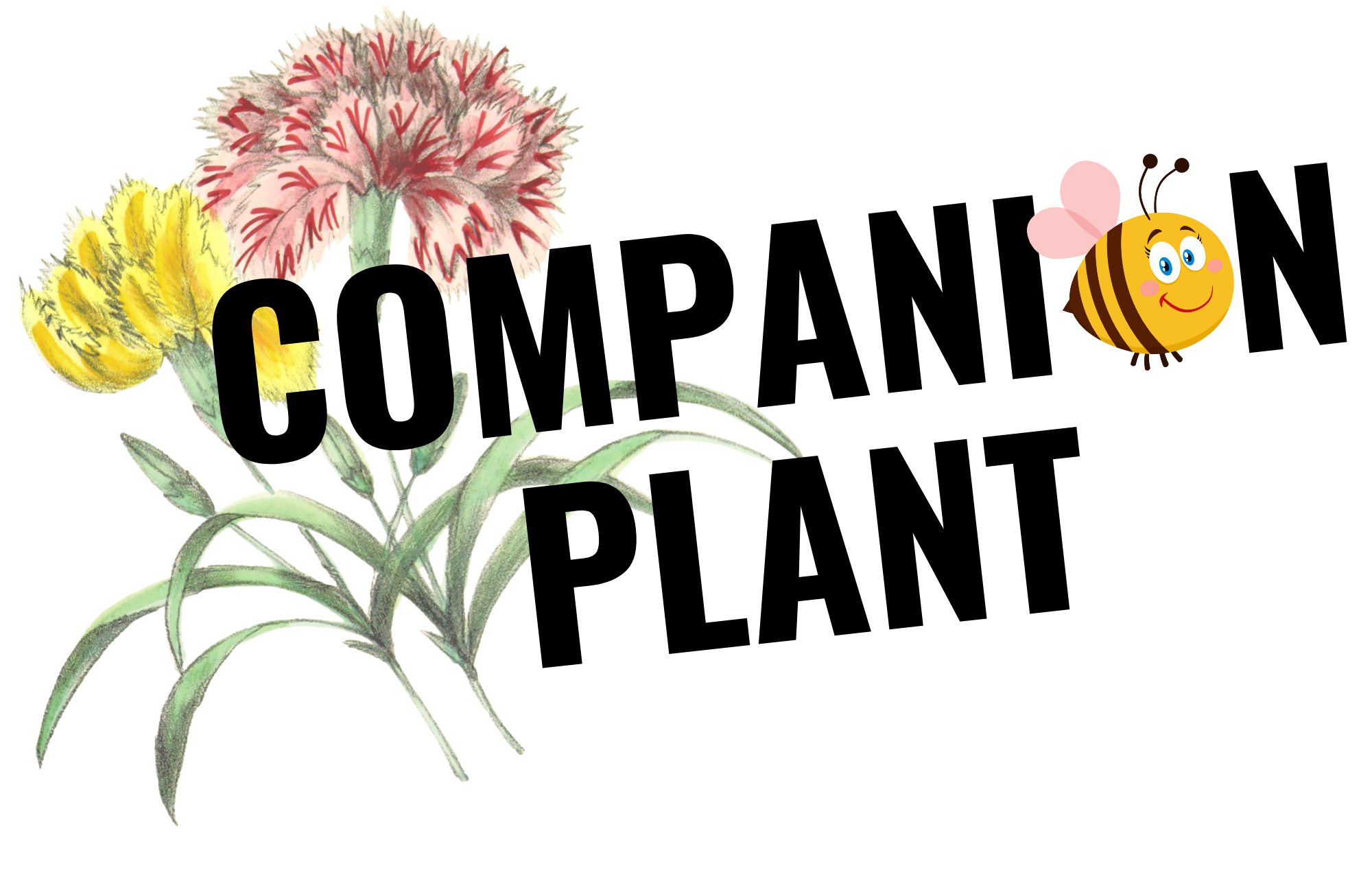
Companion plants do work to help control pests! They will help you reduce or even eliminate the use of pesticides in the garden! When combined with other pest management techniques like trap cropping, this will even further help reduce the need for pesticides.
Tips:
Plant in advance of the problem. Know when the pests arrive and have the companion plant blooming before the pests arrive.
Get the most out of your companion plants by choosing those that attract beneficial insects that will, in turn, eat several kinds of pests you struggle with.
Plant your companion plant near the problem area! This way the adult beneficial insect will see that there is a food supply for their young.
To get even more out of companion plants watch my video!
Companion Plants:
to attract beneficial predators to your garden.

Pest and Predator |
Flower |
|
Predator: Ladybug Pests: Aphids, asparagus beetle larvae, Colorado potato beetle larvae, lace bugs, mealybugs, bean beetle larvae, scale, spider mites, caterpillars, whiteflies, and eggs and larvae. |
Alyssum Dill Bronze Fennel Butterfly Weed Cilantro Marigold Dandelion Fennel Tansy Common Yarrow Anise Chamomile Cosmos Daisy Wallflower |
|
Predator: Lacewings Pests: Aphids, leaf roller caterpillars, Asparagus beetle larvae, caterpillar eggs and young caterpillars, Colorado potato beetle larvae, corn earworms, lace bugs, whiteflies, spider mites, mealybugs, and various insect eggs. |
Dill Cilantro Cosmos Dandelion Caraway Fennel Prairie Sunflower Tansy Anise Baccharis Calamint Daisy Goldenrod Lovage Oregano Sunflower Sweet Alyssum Verbena Wallflower Yarrow Coneflower |
|
Predator: Hoverfly Pest: Aphids |
Zinnia Chamomile Cilantro Cosmos Statice Alyssum Gloriosa Daisy Marigold Parsley Dill Common Yarrow Caraway Buckwheat Fennel Lemon Balm Spearmint |
|
Predator: Birds Pest: Tomato Hornworm |
Sunflower Coneflower (Echinacea) black-eyed Susan |
|
Predator: Parasitic Wasps (Inchneumonid, Trichogramma, and Braconid wasps) Pests: Tomato Hornworm Aphids, leaf roller caterpillars, butterflies, fly larvae/pupae, moth eggs, bagworms, cabbage worms, Colorado potato beetles, corn earworms, cucumber beetle, cutworm, Japanese beetle, leafminers, mealybugs, squash vine borers, tent caterpillars, whiteflies. Various insects at pupae and adult stages e. g. beetle, fly, moth Pickle worm (Trichogramma wasps)
|
Alyssum Angelica Anise Aster black-eyed Susan Chamomile Coreopsis Daisy Golden Alexander Mint Oregano Verbena Dill Cilantro Cosmos Statice Lemon Balm Parsley Marigold Zinnia Common Yarrow Caraway Fennel Tansy |
|
Predators: Birds/Hummingbirds Pests: Various Insects |
Birds: see above Hummingbirds: Mexican Sunflower Four O’Clock Petunia Zinnias Salvia Columbine Snapdragon Morning Glory |
|
Predator: Minute Pirate Bugs Pests: Mites, thrips, aphids, scales, whiteflies, soft-bodied arthropods young caterpillars, Mexican bean beetle larvae, thrips, spider mites |
Caraway Cosmos Fennel Marigold Spearmint Alfalfa Aster Buckwheat Coreopsis Cilantro Crimson Clover Daisy Oregano Verbena Wallflower Yarrow Coneflower |
|
Predator: Damsel Bugs Pests: Aphids, leafhoppers, plant bugs, small caterpillars, asparagus beetles, Colorado potato beetle eggs and larvae, spider mites, whiteflies |
Caraway Cosmos Fennel Marigold Spearmint Alfalfa |
|
Predator: Big Eyed-Bugs Pests: Many Small Insects: e. g. Leafhoppers, spider mites, insect eggs, mites, aphids, flea beetles, thrips, spider mites, caterpillars, cabbage loopers and worms, cinch bugs, nymphs |
Same as minute pirate bugs plus cover crops like alfalfa and clover. Buckwheat Eriogonum Laceflower Sunflower Sweet alyssum |
|
Predator: Assassin Bug Pests: Hornworms, leaf roller caterpillars, Mexican bean beetles, Colorado potato beetles, leafhoppers, cucumber beetles, aphids, and caterpillars. (Most insects) |
No particular flowers are preferred. Just have a highly diverse habitat. |
|
Predators: Dragonflies and Damselflies Pests: Many insects e. g. Mosquitoes, Beetles, Bees, Ants, Moths, and Wasps |
These don’t rely on plants for food, but for habitat and sources of prey. Increase plant diversity. |
|
Predator: Syrphid Fly Pests: Aphids, young cabbage worms, thrips, leafhoppers, scales, mealybus, many small caterpillars |
Angelica Baccharis black-eyed Susan Buckwheat Calamint Caraway Chamomile Cilantro Coreopsis Cosmos Daisy Dill Golden Alexander Goldenrod Heliopsis Laceflower Lovage Oregano Alyssum Wallflower Coneflower |
|
Predator: Soldier Beetle Pests: Various insect eggs and larvae, grasshoppers, caterpillars, aphids, mealybugs |
Aster black-eyed Susan Boltonia Buckwheat Chamomile Cilantro Coreopsis Daisy Goldenrod Oregano Sunflower |
|
Predator: Tachinid Flies Pests: Various caterpillars, leaf roller caterpillars Colorado potato beetles, corn earworms, cucumber beetles, cutworms, earwigs, Japanese beetles, Mexican bean beetle, sawfly larvae, squash bugs, tobacco budworms, bean leaf beetles. |
Angelica Anise Aster black-eyed Susan Boltonia Buckwheat Calamint Chamomile Cilantro Cosmos Daisy Dill Heliopsis Lovage Oregano Alyssum Coneflower |
|
Predator: Big eyed bugs, damsel bugs, minute pirate bugs, and Anaphes iole (a parasitic wasp.) Pests: Lygus bugs aka: Tarnish bugs |
Caraway Cosmos Marigold Fennel Sunflower See specific predators above for more. |
Plants that May Repel Insects
These plants MAY repel insects. There’s not been a lot of scientific research done on these. Garden lore indicates these are good things to try. Trying these won’t hurt anything and may indeed help. However, keep in mind catnip and mint, if not contained, can get out of control.
Insect to repel |
Plant to Use |
| Aphid | Basil |
| Squash Bugs | Catnip * |
| Nematodes & Squash Bugs | Marigold |
| Squash Bugs | Mint * |
| Squash Bugs | Nasturtium |
| Squash Bugs | Petunia |
| Squash Bugs | Radish |
* Use with caution, these can become invasive.
Sources:
Ziegler, Mason. Vegetables Love Flowers: Companion Planting for Beauty and Bounty. Quarto Publishing Group USA Inc, 2018
Penn State Extension Philadelphia Master Gardeners. “Beneficial insects and flowers in the garden” Gardenersthoughts, 21 June 2012 https://philadelphiacountymastergardeners.blogspot.com/2012/06/beneficial-insects-and-flowers-in.html
Hoffman, Fred “Plants that attract beneficial insects” Permaculture Research News, Permaculture Research Institute, 4 Oct 2014 https://www.permaculturenews.org/2014/10/04/plants-attract-beneficial-insects/
“Plants that attract beneficial insects” http://www.farmerfred.com/plants_that_attract_benefi.html
Walliser, Jessica. Attracting Beneficial Bugs to Your Garden: A Natural Approach To Pest Control. Quarto Publishing Group USA Inc., 2022.
